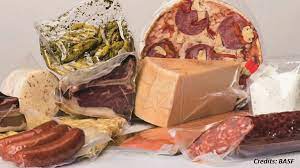BASF to Offer Butanediol and Polytetrahydrofuran with Reduced Carbon Footprints

From early 2024 onward, BASF will offer its products 1,4-butanediol (BDO) and polytetrahydrofuran (PolyTHF ® ) as ‘LowPCF’ products. BASF has calculated the individual product carbon footprints (PCF) of both chemical products. The results were compared with assessments of market-wide average carbon footprints of the corresponding products of third parties. Factors Contributing to Lower Carbon Footprints: The analysis shows that due to BASF’s production setup, the PCFs of BDO and derivatives such as PolyTHF are significantly below the global average PCF of the corresponding third-party chemicals that are all produced from fossil-based raw materials. On its journey to achieve net zero CO 2 emissions by 2050, BASF is the first large chemical company to make available to its customers the individual PCFs of all its sales products. The PCF comprises the total greenhouse gas emissions that occur until the product leaves BASF’s factory gate for the customer: from the extraction of resource





